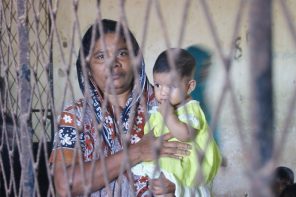Ironically, we religionists often find ourselves in the unusual position of arguing against religion’s importance. All too often religion becomes a media-imposed veneer to cover a far more complicated ethno-tribal reality, with deep colonial roots and a lingering post-colonial sequence.
Consider the Philippines, a creation of colonial Spain, occupied by the United States for the first part of the 20th century, and an independent nation-state only since World War II. The Philippines only attracts the attention of mainstream Anglo-American media when violence occurs—especially if that violence involves Muslims in the Southern region.
Such was the case this past Monday, the 23rd of November. On that fateful day, fifty-seven people were killed in a brutal roadside attack on a convoy of Mindanaoans. They had been joined by journalists who came to cover an unprecedented event: the effort to register minor local politician, Ismael or Toto Mangudadatu, as a candidate for governor, challenging the political dynasty of one of the region’s most powerful clans, the Ampatuans.
Muslim Autonomy, Christian Recalcitrance
Why does all this political jockeying matter? There are local races throughout the Philippines prior to the presidential election, which is scheduled for May 2010. Since President Gloria Macapagal Arroyo cannot run for office, the race is wide open. A major concern in Manila, for the Luzon-based central government (GPR) and whoever becomes the next president, is the Autonomous Region in Muslim Mindanao (ARMM). Specifically, the GPR does not want the ARMM to acquire official status.

On paper there has been a commitment to pursue and even to grant autonomy for Muslims in this area, the southernmost of the three principal regions that (with Luzon and the Visayas, consisting of the Panay, Negros, Samar, and other islands) define the Republic of the Philippines. An agreement brokered over 15 years ago remains unimplemented, allegedly due to terrorist activities by Muslim separatists in the South known as the Moro Islamic Liberation Front (MILF). In fact, the agreement has languished largely due to local Christian recalcitrance and the political interests of wealthy and powerful Ilustrado—the Manila elites who were first favored by the Spanish and then the American occupiers. It is they who control, manipulate, and benefit from all power arrangements in this former Spanish and American colony.
As recently as summer 2008, a ceasefire was brokered between the GPR and the MILF, but local Christian communities on Mindanao objected to its provisions. Fighting resumed, with low-level conflict between a whole set of protagonists continuing to this day. They include the Armed Forces of the Philippines (AFP) and the Philippine National Police (PNP)—who represent the official government—in addition to the local paramilitary groups who back these government forces. These armed groups total not less than 300,000 while the MILF cohort, at its maximum strength, numbers just 15,000.
Such asymmetric warfare would not be able to continue as it has for more than a decade without the local knowledge of the MILF fighters, the maritime distances, and the rugged jungle areas which comprise the larger Sulu archipelago within which Mindanao is located. It’s also noteworthy that civil society is as vibrant as government is weak in this region. During the past decade, several local initiatives to sustain existing peaceful relations, or to build bridges creating new zones of peace, have come from non-governmental and non-partisan umbrella peace advocacy groups that include Muslim, Christian, and Lumad (indigenous people) representatives.
Despite such efforts, however, last week’s massacre is likely to be recast as a quasi-religious struggle. My sources come from the region itself. In March 2009, I was working in Mindanao on a Carnegie Foundation-funded project to understand how citizen options could be secured for Muslim minorities in the southern region. I observed firsthand how quickly all the local initiatives for peace, like all events in Mindanao, were filtered through the double lens of Muslim exceptionalism: Moro politics (MILF rebels are separatists who do not respect democracy, human rights, etc.) and warlordism (each of the leading Muslim clans carves out its own territory, allies, armies, lines of payment/protection, etc.)
Casting the Massacre in Religious Terms
When I first heard of this latest, horrific incident, I wrote to several of my contacts in Mindanao whose collective sense was one of despair about the outcome. It won’t be long, I was told, before religious colors will be attached to the Maguidanao massacre. It will come in three forms.
First, recent histories remind us that the Christian side of Mindanao’s sizable South Cotabato Province was the breeding ground for the ILAGA movement in the 1970s—a Christian militia which fought with as much rigor and violence as the Moros. Then, in December 2008, churches were bombed in Northern Cotabato on the same coastal stretch of Mindanao with Maguindano and Sultan Kudarat. While the MILF was blamed in the national media its leaders rejected accusations, pointing instead to several local politicians, themselves Christian and identified with the resurgent ILAGA movement. The victims of Monday’s massacre were not just politicians but also lawyers, journalists, and professionals, all from these same Muslim-dominant areas. If the GPR fails to arrest and try the real masterminds of this heinous crime, armed groups will seek revenge in yet another cycle of what is called rido or clan vendetta (though it is, in fact, broader than the facile, tribe-restricted designation suggests).
Second, even as Andal Ampatuon Jr., son of Maguindanao governor, Andal Apatuan Sr. (both Muslim), was being brought to a Manila detention center, he denied all accusations, pointing instead to the MILF as the real perpetrators. He specifically cited Commander Ameril Umbra Kato, who is known as a fierce opponent of the Ampatuans. The blatant appeal is to project himself, and by extension his clan, as the moderate, pro-government Muslims, opposing the separatist, militant Muslims who have waged war against GPR for the past decade. Can the Arroyo government fail to heed these warning signs?
Third, the massacre could not have occurred without complicity of the very forces that are now called on to seek justice. The Times of London reported that “the local police refused to provide an escort and the Philippines Army [aka the AFP] declined a request for protection.” Yet local reportage has been filtered through and controlled by GMA (Greater Manila Area) News, the dominant TV broadcast news service for the Philippines and firmly controlled by the central government. It has regularly reported not just the atrocities but also the rallying of the Ampatuan clan and its supporters to the defense of the accused perpetrator of Monday’s massacre, Andal Ampatuan Jr.
The greatest difficulty in making sense of what unfolds is the supposed neutrality of the transnational news media. Reuters, usually known for its independence, has said that the government will provide justice. A recent article, “How will Maguindanao massacre affect the Philippines?” reports that:
- Although the Ampatuans have been emboldened by President Gloria Macapagal Arroyo (who called them valuable political allies), the fact that Ampatuan Jr. was taken into custody on Thursday and that the government has made moves to break the family’s stranglehold on Maguindanao province, demonstrate its willingness to crack down. While Arroyo is not eligible to contest next year’s elections, her Lakas-Kampi CMD alliance has already made its position known by expelling the Ampatuan patriarch and two of his sons from the party.
- The massacre was not due to Muslim rebels but was the continuation of a clan feud between the Ampatuans and the rival Mangudadatu family—one of hundreds in the South of the country. Rido, or clan feuds, have been a way of life in the Mindanao region for centuries, and both Christian and Muslim families are involved. The Mangudadatu family controls adjoining Sultan Kudarat province where there have been sporadic clashes between their large private armies for the past several months. The Mangudadatu plan to contest the Maguindanao governor’s post in next year’s elections provided the spark for the killings.
- The government’s main goal is to ensure that there is no retaliation against the Ampatuans by the Mangudadatus. For now, it looks as if the government is intent on diluting the Ampatuan family’s grip on local politics and establishing the rule of law.
While this article appears to be neutral, it in fact bolsters the case for continuing central government or GPR intervention in the affairs of Mindanaons. The ARMM is not once mentioned as an entity that might be able to function apart from Luzon forces—both political and military, but especially military—controlling all activities even as it limits the options of Muslims, Christians and Lumads (indigenous people) in Mindanao.
The irony of vigilant monitoring by GPR and AFP has been lost in most of the sensationalist reports about the violent rape and killing in the massacre. While none of this is to be condoned or dismissed, the structural violence that informs—even as it claims to limit—this recent spectacle of violence, also cries out to be named. With a state of emergency having been declared in Maguindanao, along with Cotabato City and Sultan Kudarat, there will be many more military forces stationed in the same areas where it was alleged that those who committed the crimes were themselves dressed in military uniforms.
Nor will this massacre be the last. More conflicts are likely to simmer or flare up over the next six months, but what should be clear is that the violence has less to do with religion than with state power. It is not about Muslims versus Christians, or violent Muslims engaged in a ceaseless cycle of vengeance. It is about a weak central state struggling to assimilate minorities whose very existence challenges not just the state but its ethos and its Ilustrado (nationalist elites centered in Luzon and ruling from Manila with fear, but not concern, for their Southern citizens). You may not read much about the Southern Philippines but news, and newsworthy developments, will continue in the absence of headlines from American or British media.



